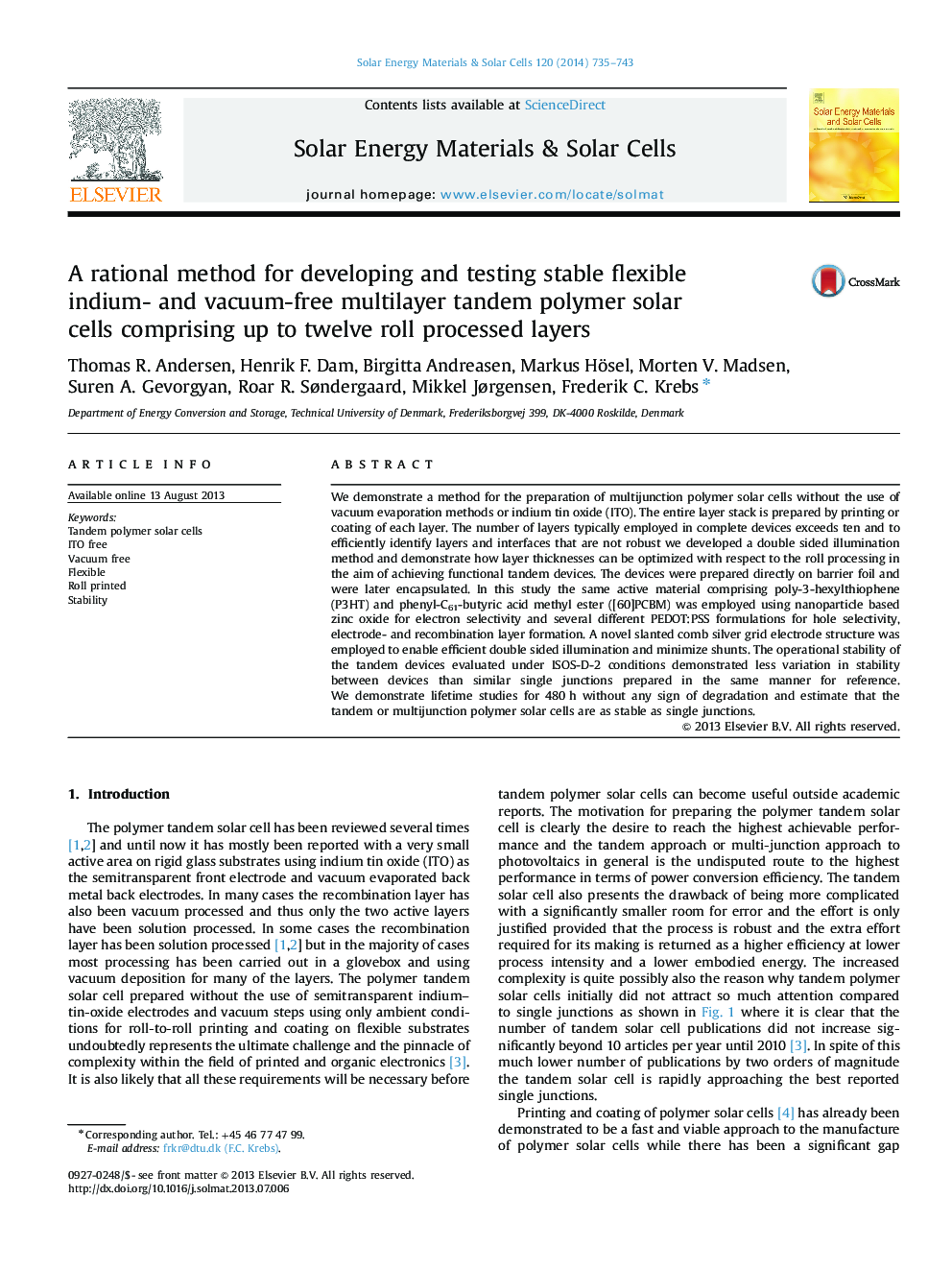| Article ID | Journal | Published Year | Pages | File Type |
|---|---|---|---|---|
| 78192 | Solar Energy Materials and Solar Cells | 2014 | 9 Pages |
•Flexible, large area polymer tandem solar cells comprising 12-layers.•Only printing and coating is used for the ITO-free and vacuum-free device stack.•A double sided illumination method was employed for stack optimization.•The methodology allows for R2R tandem stack process development.
We demonstrate a method for the preparation of multijunction polymer solar cells without the use of vacuum evaporation methods or indium tin oxide (ITO). The entire layer stack is prepared by printing or coating of each layer. The number of layers typically employed in complete devices exceeds ten and to efficiently identify layers and interfaces that are not robust we developed a double sided illumination method and demonstrate how layer thicknesses can be optimized with respect to the roll processing in the aim of achieving functional tandem devices. The devices were prepared directly on barrier foil and were later encapsulated. In this study the same active material comprising poly-3-hexylthiophene (P3HT) and phenyl-C61-butyric acid methyl ester ([60]PCBM) was employed using nanoparticle based zinc oxide for electron selectivity and several different PEDOT:PSS formulations for hole selectivity, electrode- and recombination layer formation. A novel slanted comb silver grid electrode structure was employed to enable efficient double sided illumination and minimize shunts. The operational stability of the tandem devices evaluated under ISOS-D-2 conditions demonstrated less variation in stability between devices than similar single junctions prepared in the same manner for reference. We demonstrate lifetime studies for 480 h without any sign of degradation and estimate that the tandem or multijunction polymer solar cells are as stable as single junctions.
Graphical abstractDouble sided illumination of a bifacial semi transparent polymer tandem solar cell prepared without backup and ITO using only roll printing and coating methods on a flexible substrate. Figure optionsDownload full-size imageDownload as PowerPoint slide
